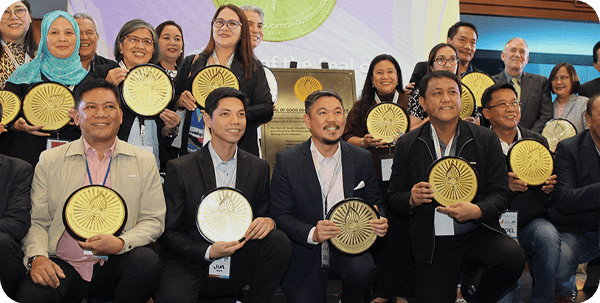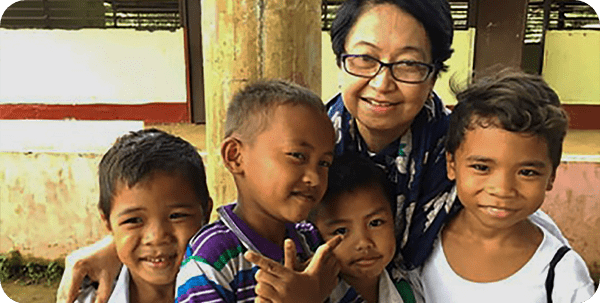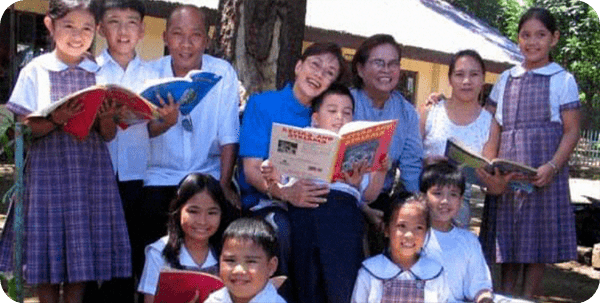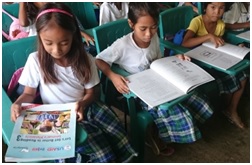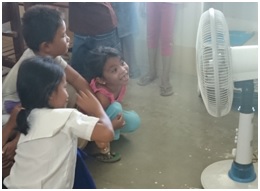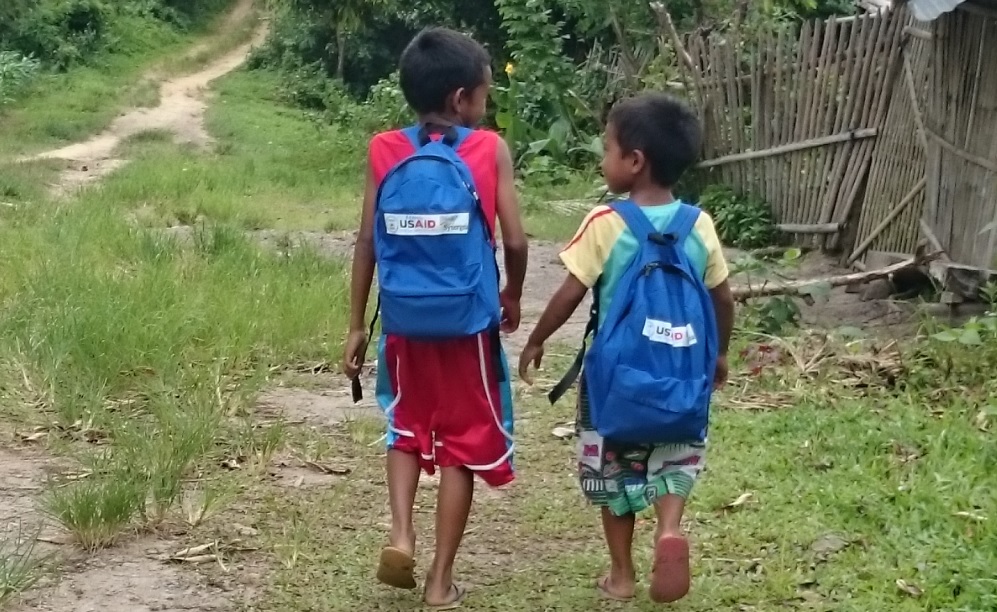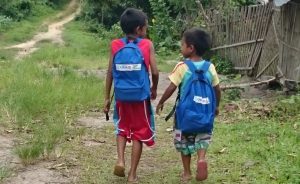July 2015 – 8-year old Reinan and 6-year old Reinald Bernil emerge from their home through a rickety bamboo-slatted gate at noon. They proceed to walk uphill to school about a mile away. The brothers, Grades 2 and 3, each wear a blue backpack containing an English workbook and school supplies, all provided by USAID through Synergeia Foundation under the post-disaster assistance package extended to victims of Typhoon Yolanda (Haiyan) that hit the Visayas region late 2013.
Reinan and Reinald are sons of corn farmers from a small village in the mountains about 8 kilometers away from the nearest town within the municipality of Lemery, Iloilo. Their school, Pacuan Primary School, is even farther away, situated at the very edge of the border between Iloilo and Capiz provinces. The rough dirt road uphill is only passable by motorcycle part of the way and only if the weather does not render it muddy from the rain.
Brothers Reinan and Reinald walk a mile uphill to school with their new bags containing school supplies, all donated by USAID.
Alternating between a walk and a run, the brothers soon reach a rice paddy and tread carefully across the narrow dirt path and beyond where their school lies. Pacuan PS only has two classrooms. A teacher alternates between two grades inside the same room separated only by a low wooden divider. Since the school is located in an off-grid land without electricity, the solar panel from USAID is of tremendous help. “When the classroom gets too hot, we hold our classes outside under the trees,” says Teacher May Jean Domingo. The young teacher who is in charge of Pacuan PS says the power source has made it possible to use electric fans that will keep the pupils from getting distracted by the heat while they study. She adds that the workbook along with the school implements have made the children very happy. She expresses her gratitude that help has reached them despite the school’s distance and risky terrain.
“When the classroom gets too hot, we hold our class outside under the trees,” says Teacher May Jean Domingo
Residents shared that a bomb planted by communist rebels exploded a day earlier, destroying a cellular site nearby. Children beset by poverty in the remote areas of Lemery can get easily enticed by extreme ideology. With the gift of a more conducive learning environment and new school materials they can call their own, the children of Pacuan PS are instead encouraged to keep coming to school and become productive members of society.
The post-disaster assistance, which provided teaching and learning materials to over 3,800 teachers and almost 35,000 students, plus community incentive grants in the form of electronic equipment to over 400 schools in 19 municipalities in the Visayas, is a component of USAID’s Education Governance Effectiveness (EdGE) Project.
